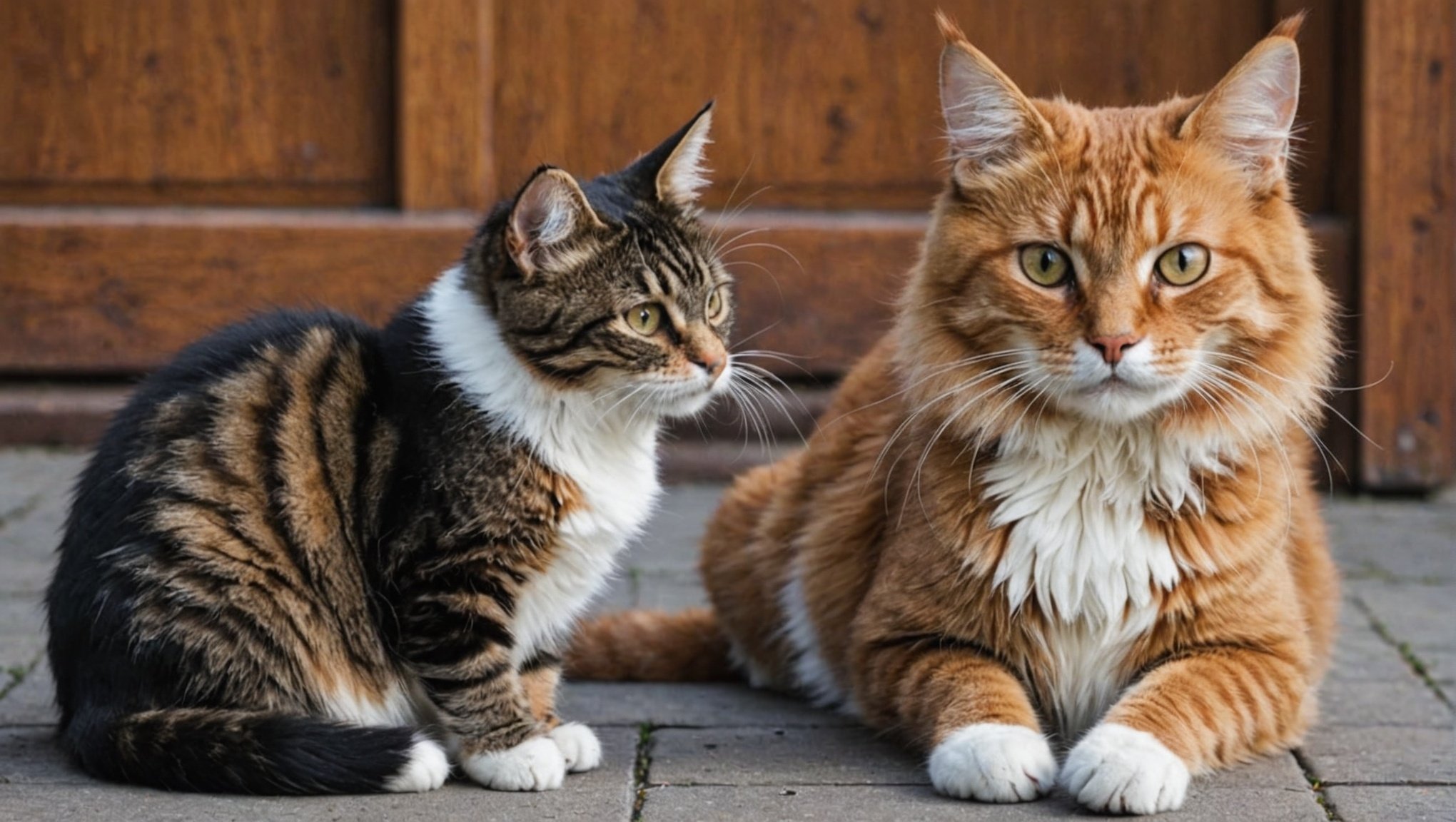Mastering the Art of Introducing a New Dog to a Feisty Cat: Tips for a Peaceful Transition
Introducing a new dog to a feisty cat can be a daunting task, but with the right approach, it can be a successful and peaceful transition for all pets involved. Here’s a comprehensive guide to help you navigate this process.
Preparing Your Home and Pets
Before bringing a new dog into your home, it’s crucial to prepare both your existing cat and your living space.
Also read : Top Supplements for Promoting Joint Health in Senior Dogs: A Comprehensive Guide
Create a Safe Space for Your Cat
Ensure your cat has a safe and secure area where it can retreat if feeling overwhelmed or threatened. This could be a high perch or a separate room that the dog cannot access. This safe space should be equipped with all the necessities, such as food, water, litter box, and favorite toys.
Safe Space Checklist:
- High perch or cat tree
- Separate room with door
- Food and water
- Litter box
- Favorite toys and blankets
Prepare Your Dog
If you’re adopting a new dog, it’s essential to understand its temperament and behavior around cats. For example, if the dog is naturally aggressive towards cats, it may not be the best fit for your household. Dogs like Elliot, who are friendly and easy-going, might be a better choice.
Also read : Top Safe Chew Toys for Soothing Teething Puppies: A Comprehensive Guide
Training Your Dog
Start training your dog before the introduction to ensure it understands basic commands and has good impulse control. Positive reinforcement training methods are highly effective in teaching dogs to behave calmly around cats.
Training Tips:
- Use positive reinforcement techniques
- Teach basic commands like "sit," "stay," and "leave it"
- Practice impulse control exercises
- Reward calm behavior
The Introduction Process
The introduction process is critical and should be done gradually to avoid any immediate conflicts.
Step 1: Visual Introduction
Begin by allowing the dog and cat to see each other from a distance without direct contact. This can be done through a baby gate or a screen door. Observe their body language and reactions. If either pet appears aggressive or fearful, it’s best to slow down the process.
Step 2: Scent Introduction
Swap the bedding, toys, or blankets of the dog and cat to allow them to become familiar with each other’s scents. This step helps in reducing the stress and anxiety associated with new smells.
Step 3: Controlled Face-to-Face Introduction
Once both pets seem comfortable with each other’s presence and scent, it’s time for a controlled face-to-face introduction. Use a neutral area where neither pet feels territorial. Keep the dog on a leash or in a crate to prevent any sudden movements.
Introduction Steps:
- Visual introduction through a barrier
- Scent introduction by swapping bedding and toys
- Controlled face-to-face introduction in a neutral area
Managing the First Few Days
The initial days after the introduction are crucial in setting the tone for the relationship between your dog and cat.
Supervise Interactions
Always supervise interactions between the dog and cat, especially in the early days. If you notice any signs of aggression or fear, intervene immediately.
Provide Separate Resources
Ensure both pets have separate resources such as food and water bowls, litter boxes, and beds. This helps in reducing competition and stress.
Maintain Routine
Stick to your pets’ regular routines as much as possible. Consistency in feeding times, playtime, and sleep schedules can help reduce stress and make the transition smoother.
Addressing Common Issues
Despite careful planning, some issues may arise during the transition period.
Aggression
If either pet shows signs of aggression, such as growling, hissing, or biting, it’s important to address the issue immediately. Separate the pets and consult with a professional dog trainer or behaviorist for guidance.
Fear and Anxiety
Pets like Ariel, who are naturally shy, may take longer to adjust to the new environment. Use treats and positive reinforcement to help build confidence and reduce anxiety.
Long-Term Strategies for Harmony
For a long-term peaceful coexistence, several strategies can be employed.
Continuous Training
Continue training your dog to ensure it respects the cat’s boundaries. Teach commands like “leave it” and “back off” to help manage interactions.
Positive Reinforcement
Use positive reinforcement techniques to encourage good behavior. Reward your dog for calm interactions with the cat.
Cat Grooming and Health Care
Ensure your cat’s grooming and health care needs are met. A well-groomed and healthy cat is less likely to be stressed or irritable.
Real-Life Examples and Anecdotes
Understanding how others have managed similar situations can be incredibly helpful.
Brie and Cheddar
Brie and Cheddar, two Chihuahua mixes, were adopted together and had to adjust to a new home. Brie, being more confident, helped Cheddar overcome his shyness and fear of bigger dogs. Their story highlights the importance of having a confident companion to ease the transition.
Professional Advice
According to dog training experts, “The key to a successful introduction is patience and gradual exposure. Rushing the process can lead to long-term behavioral issues”.
Introducing a new dog to a feisty cat requires patience, understanding, and careful planning. By preparing your home, training your dog, and managing the introduction process carefully, you can create a harmonious environment for all your pets.
Key Takeaways:
- Prepare a safe space for your cat
- Train your dog using positive reinforcement
- Gradual introduction is crucial
- Supervise interactions closely
- Maintain routine and provide separate resources
- Address aggression and fear promptly
- Continue training for long-term harmony
By following these tips and being mindful of the unique personalities of your pets, you can ensure a peaceful and loving home for all.
Additional Resources
For further guidance, here are some additional resources:
| Resource | Description |
|---|---|
| Professional Dog Trainers | Consult with certified dog trainers for personalized advice and training. |
| Pet Behaviorists | Experts in pet behavior can help address specific issues and provide strategies. |
| Online Forums | Join online forums and communities to share experiences and get tips from other pet owners. |
| Local Animal Shelters | Many shelters offer workshops and advice on introducing new pets to your household. |
By leveraging these resources and applying the tips outlined above, you can master the art of introducing a new dog to a feisty cat, ensuring a harmonious and loving home for all your pets.
















